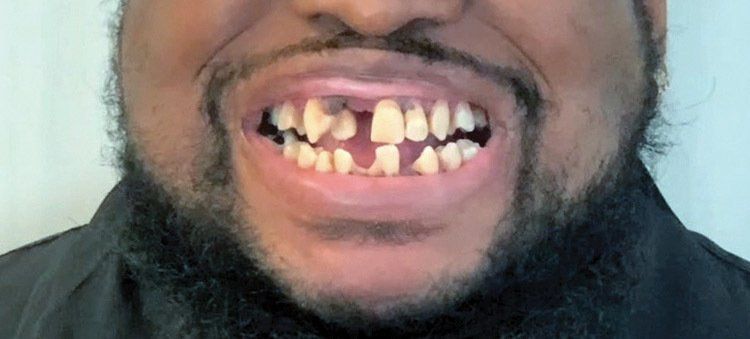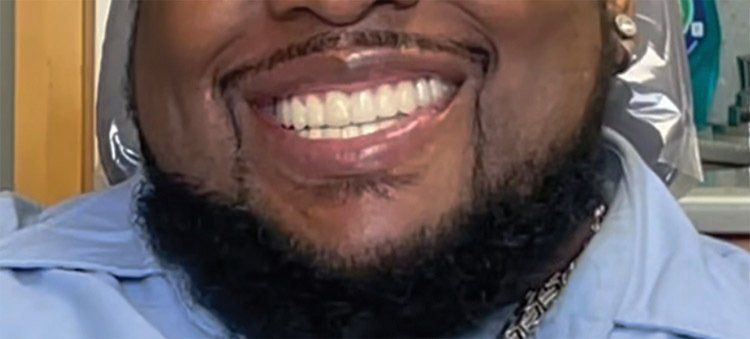Immediate Extraction and Implant Placement
Can help reduce treatment time by months
When a patient goes to a dentist and is told that one of their teeth cannot be saved, it is very unwelcome news, especially if it is one of the teeth easily visible to others. Often, the patient’s first thought is, “I’m going to have to walk around with a missing tooth!” That unpleasant thought is followed quickly by concerns about the time and cost involved in replacing that extracted tooth. The patient also worries about having to wear a partial denture, flipper, or bridge temporarily until their extraction site heals and a permanent tooth replacement can be fitted. These types of temporary tooth replacements may not match the patient’s other teeth very well, may not fit very well, and may come loose when the patient is talking, eating, smiling, or laughing.
For several decades, dental implants have been at the forefront of tooth replacement options. They provide a way to restore a natural-looking, functional smile that frees the patient of all the worries that accompany tooth restoration with a removable appliance. One of the main drawbacks of dental implants, though, is that the patient has to wait ten to twelve weeks following the extraction of the unsalvageable tooth before he or she can have a dental implant placed.
Once the implant is placed, the patient continues to wear a removeable prosthesis to maintain an aesthetically acceptable appearance. However, the patient still has to wait four more months for the implant and bone to join together and the surgical site to heal before a permanent crown can be attached to the dental implant. Fortunately, for qualifying patients, that months-long wait is no longer necessary.
The advantages of immediate implant placement following tooth extraction
Advances in surgical techniques, along with a fuller understanding of how extraction sites heal, has allowed dentists with specialized training to perform both the extraction of a diseased or fractured tooth and the placement of a dental implant during the same office visit. This is a less invasive approach to treatment because it requires just one surgery.
This combination of immediate extraction and immediate implant placement allows the patient to shorten the overall treatment time by months.
Sometimes, the dentist is able to attach a temporary crown to the dental implant during the surgical appointment. In these cases, the patient enjoys the added benefit of not having to go out in public with a missing tooth and not having to wear a temporary dental prosthesis, which some patients find unsightly, uncomfortable, or poor-fitting.
Am I a Candidate?
Candidates for immediate extraction and immediate dental implant placement are those who have a tooth in need of extraction and whose bone surrounding the tooth is otherwise mostly free of infection, is present in sufficient quantity, and is of acceptable quality. Even patients who need multiple teeth extracted may qualify to have implants placed immediately following the extractions.
What To Expect?
There will be four appointments to complete the treatment plan from start to finish:
Pre-Surgical Appointment: During this office visit, the dentist will go over your current state of health as well as all the medications and supplements you are taking at the time. He or she will review options for sedation, and you will choose one. Any medications that you will need to take before or after the surgery – such as anti-inflammatories and antibiotics – will be prescribed, and directions on when and how to take them will be provided.
Many patients do not require any sedatives or pain medication following surgery; however, if you and your dentist decide that your treatment plan will include them, he or she will direct you on when and how to take them.
Finally, if your dentist requires any study models, those will be taken during this appointment.
Surgery Day: You will receive I.V. or oral sedation prior to the start of the extraction and dental implant placement procedure. You will also receive topical anesthetic and local anesthesia. Any additional dental impressions your dentist may want will be taken prior to the start of the surgical procedure. The dentist will remove the unsalvageable tooth with great care so that as little damage as possible is done to the bone that lines the socket. The dentist will then examine the socket carefully and clean it of any infection. He or she will then prepare the socket to receive the dental implant, and the implant will be placed into it.

Patient before complete extraction of all teeth.
At this point, the dentist will evaluate the stability of the dental implant in the socket. If he or she determines that the dental implant is secure enough to receive a dental restoration, such as a crown, at that time, the dentist will attach a connective device called an “abutment” to the dental implant and attach the temporary crown to the abutment. This process is called “immediate loading.” Then, you will go home with your fully restored smile to rest and begin healing.
Post-Operative Follow-Up: Your next office visit will be a brief one and scheduled for two weeks after your surgery. The dentist will examine your surgical site to evaluate how well it is healing and ask you if you have experienced any problems. At this visit, you will also schedule the fourth appointment for three months later so that your permanent dental restoration can be fabricated.

Two hours later: 12 implants placed and temporary restorations.
At this point, the dentist will evaluate the stability of the dental implant in the socket. If he or she determines that the dental implant is secure enough to receive a dental restoration, such as a crown, at that time, the dentist will attach a connective device called an “abutment” to the dental implant and attach the temporary crown to the abutment. This process is called “immediate loading.” Then, you will go home with your fully restored smile to rest and begin healing.
Post-Operative Follow-Up: Your next office visit will be a brief one and scheduled for two weeks after your surgery. The dentist will examine your surgical site to evaluate how well it is healing and ask you if you have experienced any problems. At this visit, you will also schedule the fourth appointment for three months later so that your permanent dental restoration can be fabricated.
Permanent Restoration Creation: Your dentist will take an impression of your surgical site and send this to a dental lab to have your permanent dental restoration fabricated. If your dentist has the ability to fabricate restorations right in his or her office, you may be able to have the permanent dental restoration created and attached to your dental implant during this same visit. Otherwise, a fifth appointment will be scheduled for the dentist to remove the temporary dental restoration from your implant, attach the permanent restoration received from the dental lab, and make any minor adjustments to it.
When it is all said and done, you could reduce your treatment time by as many as four months by choosing the immediate extraction and immediate dental implant procedure.

Three months later: Patient with permanent restorations. (Photos courtesy of Dr. Andrei Mark)
Disadvantages of the Procedure
There are disadvantages to the immediate extraction and immediate dental implant placement course of treatment. The most significant is the elevated risk of implant failure due to inadequate integration between the bone and the dental implant. When this does occur, it is often the result of the bone not being given enough time to fuse with the dental implant properly.
Immediate dental implant placement can also involve less predictability of the levels of soft and hard tissue the patient will have available in the future, as well as challenges in attaining primary stability of the dental implant. Primary stability is the degree of mechanical engagement of the dental implant with the bone when it is first placed into the socket. Sufficient primary stability is what allows for immediate loading.
Primary stability is also important because it literally forms the foundation for the development of secondary stability. This is the degree of unity between the dental implant and the bone after osseointegration – or fusion of the two – has finished. Secondary stability is essential to the longevity of the dental implant.
Choosing a Dentist
As with any surgical procedure, choosing the right surgeon is key to avoiding complications and achieving the best results. For example, immediate loading is not considered a routine procedure in implant dentistry, so it is important to choose a dentist who is highly experienced in this specific procedure to maximize the chances of a successful outcome. For additional help in selecting the right implant dentist, see the blog: Choosing a Dental Implant Provider.
The other key to success is for the dentist to review a patient’s case carefully and to offer immediate extraction and immediate dental implant placement only if that individual meets the criteria for being a good candidate. Once a qualifying patient chooses immediate extraction and immediate dental implant placement, the dentist should plan each step of the treatment process meticulously to ensure the result is structurally, functionally, and aesthetically ideal.
Conclusion
For patients confronted with the need to have a tooth extracted as part of a plan to restore the function, appearance, and/or health of their teeth, immediate extraction and immediate dental implant placement might be the ideal treatment choice. It provides a faster, more comfortable, and less invasive solution.
* * *

